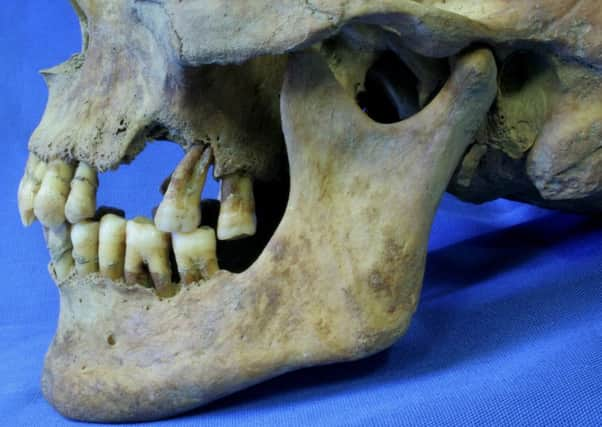Most victims of Irish Famine were heavy smokers: Queen's University research


The claim is based on research carried out by the Belfast university and the University of Otago in New Zealand on the teeth of 363 adult victims of the Great Irish Famine, who died in the Kilkenny Union Workhouse between 1847 and 1851.
Their remains were discovered in an unmarked mass burial ground by archaeologists in 2005.
Advertisement
Hide AdAdvertisement
Hide AdThe findings showed poor oral health among most of the famine victims, with 80% of the adult remains showing evidence of tooth decay, and over half missing teeth.


There were also signs of pipe smoking marks on their teeth.
Researchers say the poor oral health is indicative of heavy smoking rather than as a result of their diet.
It is the first study that explores the relationship between smoking and oral health in an archaeological sample of a historical population.
Professor Eileen Murphy, from the School of Natural and Built Environment at Queen’s University Belfast, said: “This research is important as the current clinical understanding of how smoking affects oral health is not fully understood, and this study adds to that discourse.
Advertisement
Hide AdAdvertisement
Hide Ad“As well as this, the study also gives us a unique insight into the living conditions of the working classes in Victorian Irish society at the time of the Great Famine.
“Smoking was evidently an important part of life for these people, a habit that they could enjoy amongst deprived social conditions and a very harsh and difficult life, but it may have contributed to their ill health.”
Prof Murphy added: “Despite a vast amount of historical records surviving from the 19th century, very little is known about the experienced living conditions of the poor and labouring classes.”
Dr Jonny Geber, from the Department of Anatomy at the University of Otago, said: “We believe the bad condition of the teeth studied was because of widespread pipe smoking in both men and women, rather than their diet of potatoes and milk, as a comparative study of the 20th century population on the same diet didn’t have the same evidence of poor oral health.”